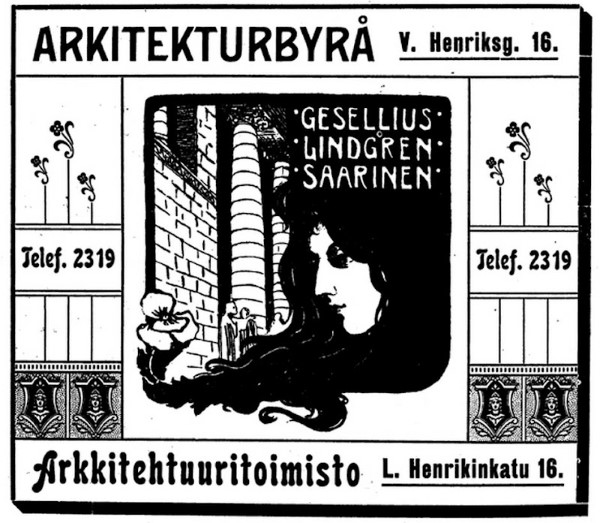- Year 1907.
- Visited by Gustav Mahler (1860-1911).
Eliel Saarinen
Gottlieb Eliel Saarinen (1873-1950) was a Finnish architect known for his work with art nouveau buildings in the early years of the 20th century. He was the father of Eero Saarinen.
Saarinen was educated in Helsinki at the Helsinki University of Technology. From 1896 to 1905 he worked as a partner with Herman Gesellius and Armas Lindgren at the firm Gesellius, Lindgren, and Saarinen. His first major work with the firm, the Finnish pavilion at the World Fair of 1900, exhibited an extraordinary convergence of stylistic influences: Finnish wooden architecture, the British Gothic Revival, and the Jugendstil. Saarinen’s early manner was later christened the Finnish National Romanticism and culminated in the Helsinki Central railway station (designed 1904, constructed 1910-14). Between 1902 and 1912, he was also co-author of the design for the Fennia series, produced by Arabia pottery.
From 1910 to 1915 he worked on the extensive city-planning project of Munksnäs-Haga and later published a book on the subject. In January 1911 he became a consultant in city planning for Reval, Estonia and was invited to Budapest to advise in city development. In 1912, a brochure written by Saarinen about the planning problems of Budapest was published. In April 1913 he received the first place award in an international competition for his plan of Reval. From 1917 to 1918 Saarinen worked on the city-plan for greater Helsinki. He also designed a series of postage stamps issued 1917 and the Finnish markka banknotes introduced in 1922.
After the divorce from his first wife, Mathilde (who then married Herman Gesellius), on March 6, 1904 Saarinen married his second wife, Louise (Loja) Gesellius, a sculptor in Helsinki, and the younger sister of Herman Gesellius. They had a daughter Eva-Lisa (Pipsan) born 31-03-1905 and a son Eero Saarinen born 20-08-1910.
Villa Hvitträsk
Hvitträsk was built between 1901-1903 by architects Herman Gesellius, Armas Lindgren and Eliel Saarinen. The main building, designed in National Romantic style, built of logs and natural stone, was both a common studio and a home for Eliel Saarinen and Armas Lindgren for some years after it was completed. During that time, Gesellius lived in the courtyard building and later moved into the north-wing of the main building after Lindgren relocated in Helsinki.
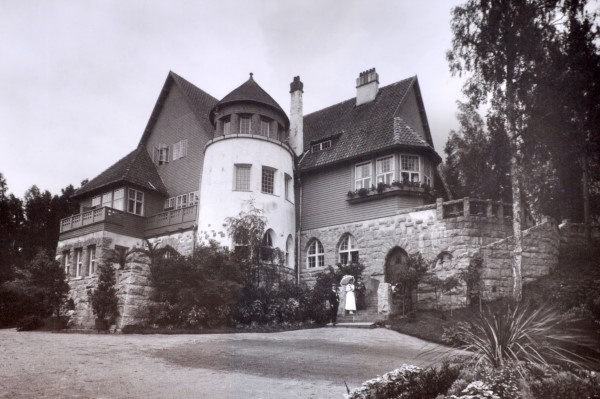
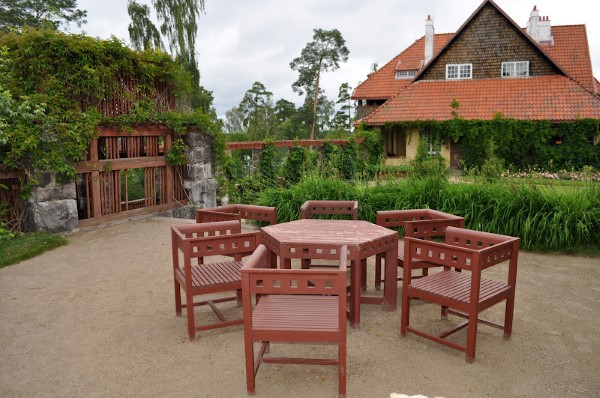
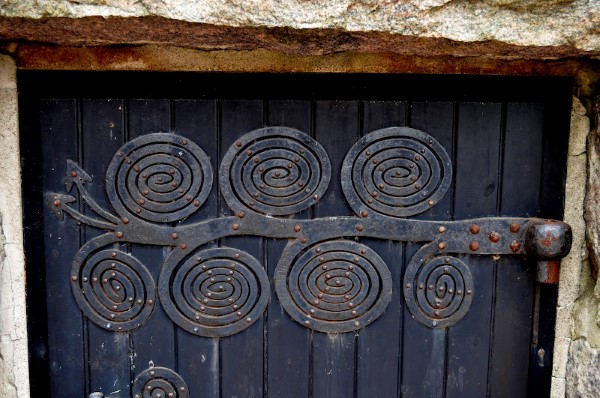
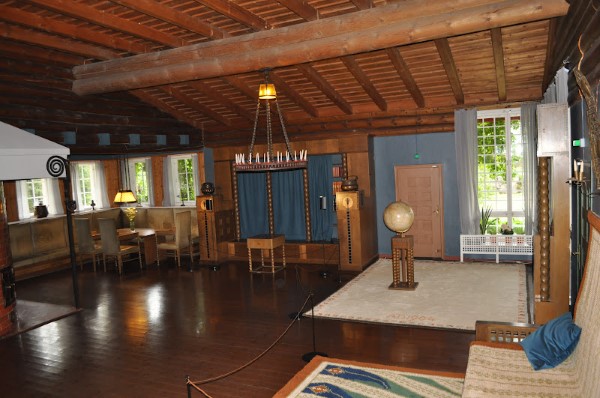
During the early decades, the main building served as both an architectural office and as a cultural home. It was visited by such esteemed figures as Jean Sibelius, Gustav Mahler, Axel Gallen-Kallela and Maksim Gorki. The office’s staff also lived at Hvitträsk, and this is where the plans were drawn up for the Helsinki Railway Station, the National Museum of Finland and the monumental Munkkiniemi-Haaga project, among other grand works.

